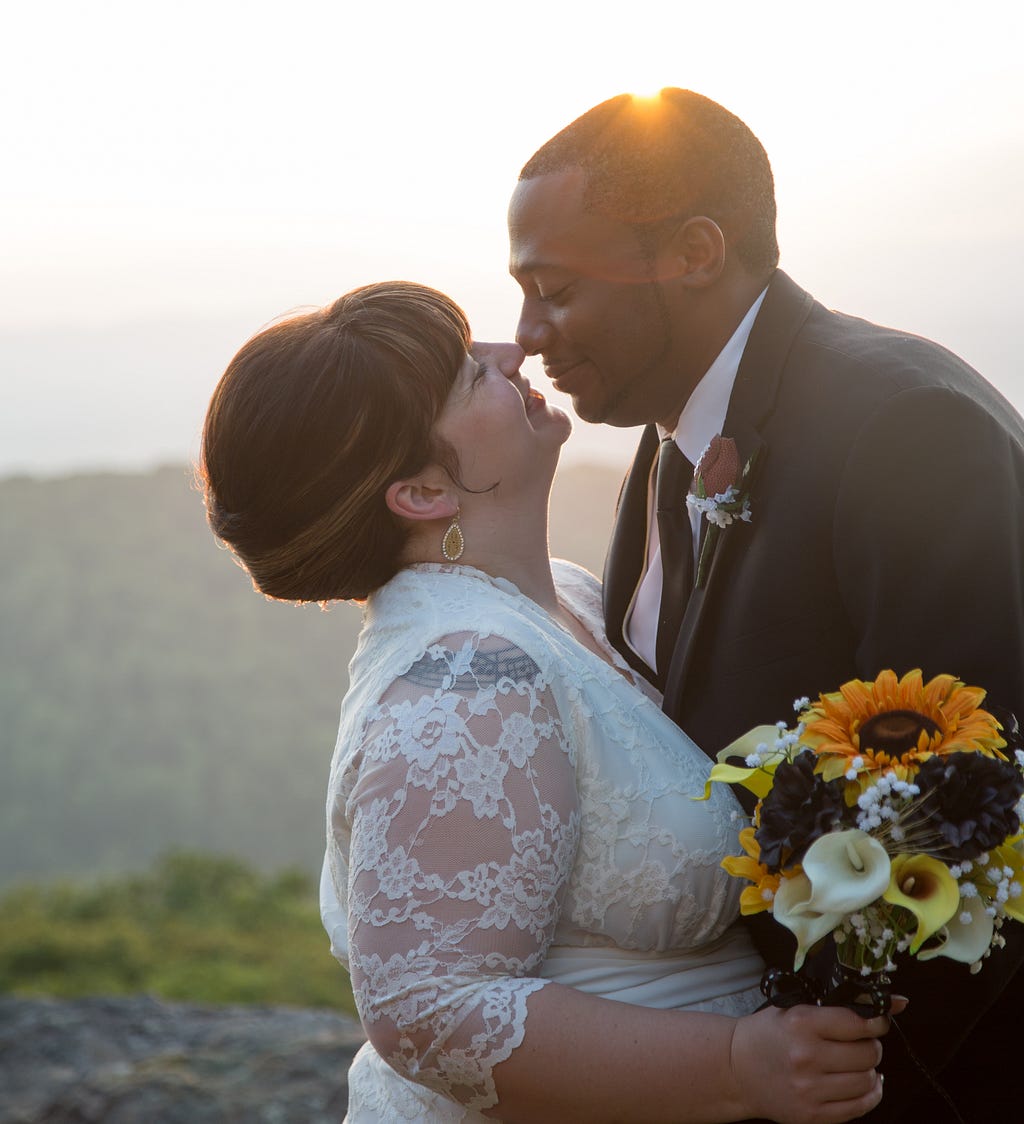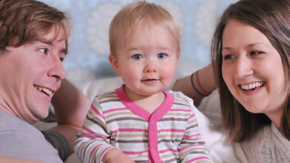Turning the impossible to possible: my cancer and fertility experience

My husband and I got married on September 17, 2016. Just four short months after exchanging our vows, we received my cervical cancer diagnosis. While it was caught early, I was advised that a radical hysterectomy was my best shot at a cure for the long term. My husband and I had not had the opportunity to start a family of our own yet, so the idea of having a hysterectomy at age 29 was a tough pill to swallow.
After discussing my fertility concerns with my oncologist, it was decided that my ovaries, which were not compromised by the cancer, would remain intact. This meant that having a biological child of our own someday was still a possibility, but we would need a surrogate (gestational carrier, to use correct medical terminology) to carry the pregnancy. My younger sister immediately stepped up to the plate and graciously offered to do this for us when the time came. Since my ovaries were staying put, we figured we had plenty of time to explore the idea later down the road. So, I set my focus on having the surgery, beating the cancer, and getting better. We scheduled the hysterectomy for April 6th.
Fast forward a few weeks when I had my first post-op appointment and received my surgical pathology results. While the surgery was successful in removing all traces of cancer, it turns out that I had about three times the amount of cancer my oncologist had originally suspected. As a result, I would be at a higher risk for recurrence and it was recommended that I pursue adjuvant radiation therapy to improve the likelihood of living out the rest of my life cancer-free.
Due to the close proximity of my ovaries to the area that would be targeted by radiation, I was advised that the ovaries were not likely to survive the treatment and that I could expect to enter early menopause soon after. This was another devastating blow to my future fertility and it became clear that we didn’t have any time to waste. I immediately made an appointment with a reproductive endocrinologist (RE) to discuss our options. We opted to do a quick IVF cycle and freeze the resulting embryos in hopes of carrying out our surrogacy plan in the future. Radiation needed to begin sooner than later, so we needed to move quickly with our fertility preservation efforts. Fast forward another week and we were sitting in front of our IVF Coordinator, who was demonstrating how to administer the injections that I would be giving myself, which would stimulate my ovaries for egg retrieval.
Things were progressing rather well, all things considered; but I soon ran into a huge problem when I received my first home delivery pharmacy order with my stimulation injections. I checked my dosage instructions and did the math, quickly realizing that I only had about three days’ worth of medication for a ten+ day cycle. When I called the pharmacy, they told me that they only sent what my insurance covered to get me started, and the rest would have to be paid for out-of-pocket. The medical bills from my surgery were still piling up, and I certainly did not have another $4000+ to shell out for medications. But I also didn’t have time to waste. The medications had arrived on a Saturday. At this rate, I would run out of medicine by Tuesday.
As I debated my predicament over the weekend, I recalled my RE mentioning that a few of her previous cancer patients had received financial assistance through Livestrong for their fertility treatment. I had no idea what was involved, but desperate for help, I did a quick web search and began filling out an application for the Livestrong Fertility program. I started the application Sunday night and it seemed simple enough, but understandably would require my doctors to complete some forms. I figured there was just no way to get it all done and get an approval in time to get my meds within the next 48 hours. So, I left the application incomplete. To my surprise, the following morning, I received a call from a Livestrong Navigator named Minnie about my application. When I explained my situation, Minnie assured me that if we acted quickly, I could get my medicine the very next day. There was hope after all! And indeed, with Minnie’s help and a few phone calls to my doctors, we were able to get it done. My donated medications arrived as promised the next day and I was able to continue my IVF cycle. I was speechless.
I am simply amazed that something I had so quickly dismissed as impossible was realized in such a short time. My experience with Livestrong was a breath of fresh air for me in a time that I desperately needed it, and I am so thankful to have been treated with such kindness and generosity. As I continue my fertility preservation efforts and prepare for my next cancer treatment, I can personally attest to the fact that the Livestrong Fertility program did just what it is designed to do. And for that, I am truly grateful.
Jessica, cervical cancer survivor
LIVESTRONG Fertility provides educational information and access to resources that support cancer patients and survivors whose fertility may be at risk due to a cancer diagnosis and/or its treatment. Learn more at livestrong.org/fertility
Turning the impossible to possible: my cancer and fertility experience was originally published in Livestrong Voices on Medium, where people are continuing the conversation by highlighting and responding to this story.
